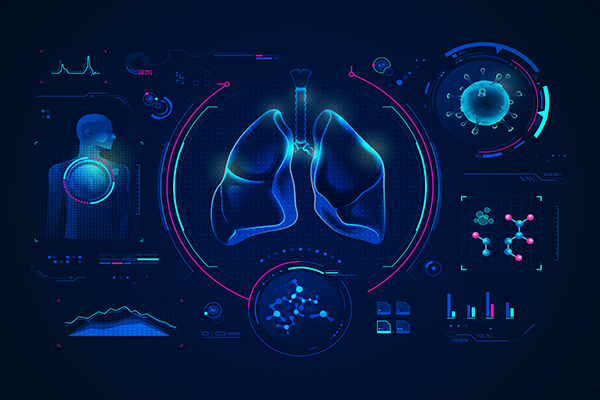
Vivian Lipari, researcher at the Universidad Internacional Iberoamericana (International Iberoamerican University, UNIB), collaborates in a study that develops a cutting-edge technological system to treat chronic obstructive pulmonary disease (COPD) early.
COPD is a common respiratory disease worldwide, characterized by long-term breathing difficulties and chronic bronchitis. Early detection can improve the patient's quality of life, as well as increase the chances of successful treatment. The most common symptoms include wheezing, coughing and respiratory impairment. According to the World Health Organization (WHO), this lung disease is the third leading cause of death worldwide and in 2019 caused 3.23 million deaths.
The diagnosis of this disease is made by analyzing the patient's history of exposure to pulmonary irritants such as smoking, as well as through physical tests and different examinations such as spirometry and chest X-rays. However, there are limitations in the efficacy of some of the methods used for detection.
In search of an effective and non-invasive detection method, an approach using temporal and spectral features based on ultra-wideband (UBW) radar technology was developed. This technology was combined with advanced signal processing algorithms to analyze the characteristics of patients' breathing patterns.
Implementation of this technique involves placing radar sensors near the patient's chest. The sensors emit short radar pulses, measuring the distance between the seating tissues and the lungs. This measurement makes it possible to evaluate respiratory airflow, chest wall movements and lung behavior. The acquired signals are processed using machine learning algorithms, which have been trained on a dataset of individuals with and without COPD.
One of the main advantages of this approach is its ability to simultaneously capture temporal and spectral features. Temporal features refer to changes that occur over time, while spectral features refer to measurements in the frequency domain. The combination of the two provides a comprehensive analysis of respiratory patterns, enabling accurate identification of lung disease. Traditional detection methods focus on limited aspects, such as airflow restriction, often resulting in lower sensitivity and specificity.
The potential benefits of this technology extend to telemedicine and remote patient monitoring. With the rise of remote medical care, this system offers a convenient solution for monitoring COPD symptoms from home. Patients can use portable radar devices to monitor their chest movements and transmit the data to healthcare providers for analysis. This improves the management of this disease by facilitating early intervention and reducing the need for frequent hospital visits.
If you want to learn more about this study, click here.
To read more research, consult the UNIB repository.
The Universidad Internacional Iberoamericana (UNIB) offers several master's degree programs, one of them is the Master's Degree in Strategic Management with Specialization in Information Technology.